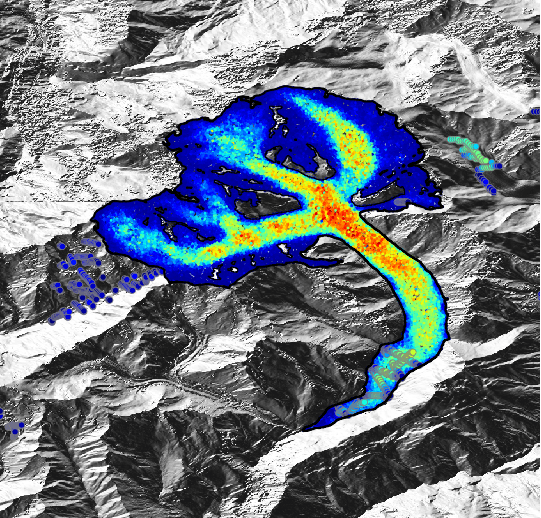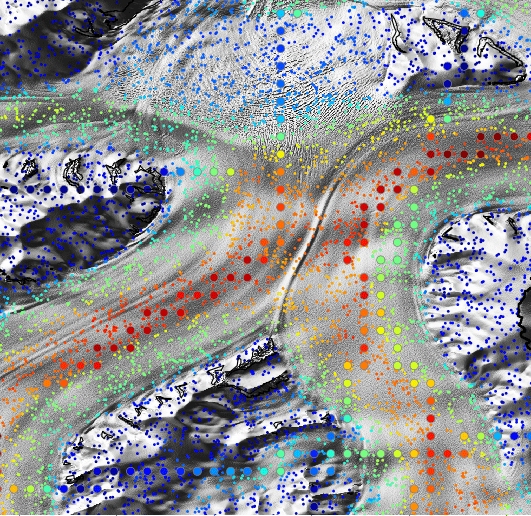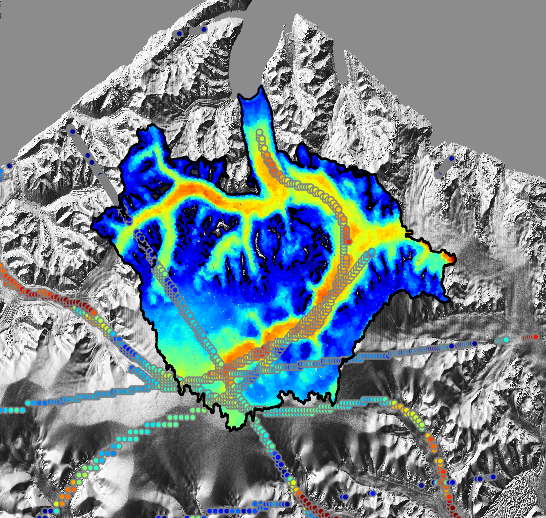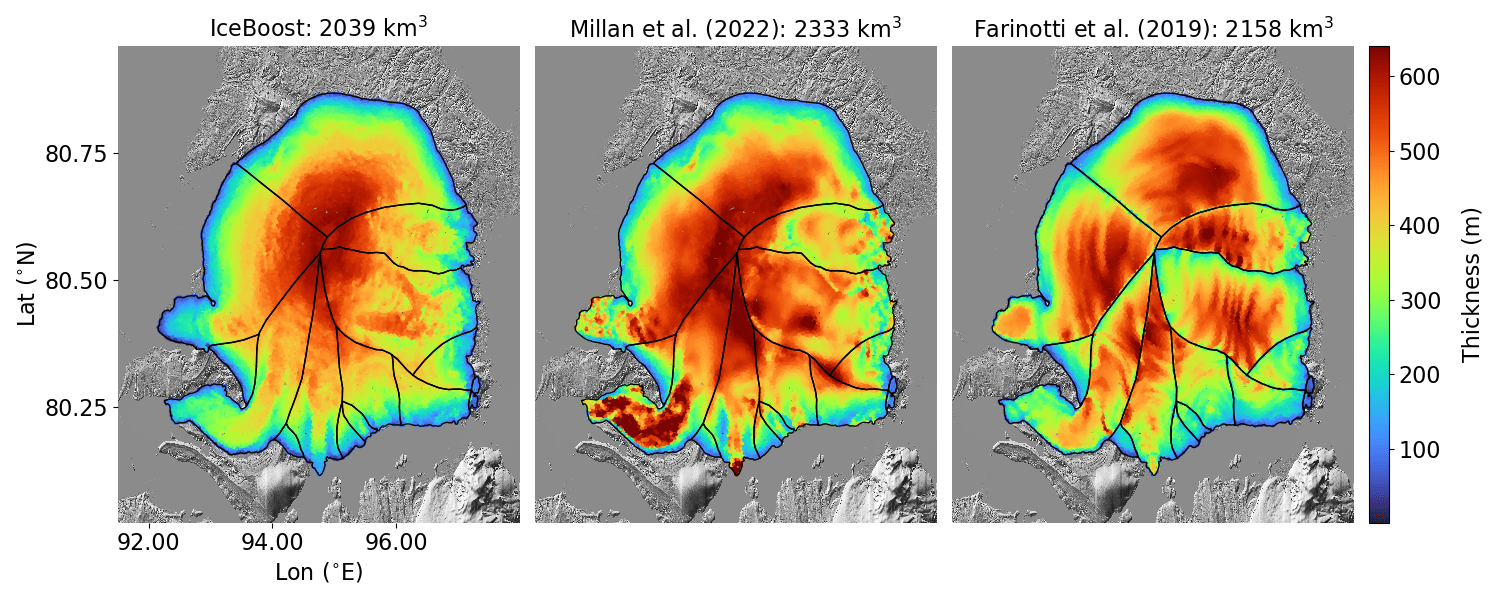skynet
machine learning models for glacier ice thickness inversion
To know more about Skynet: 🔗
The goal is to develop a machine learning systems to provide a solution for global glacier ice volumes. Is ML even necessary ? It is not. But, first, is some fun. Second, it may or may not be better as compared to other existing solutions that are based on physical principles or other methods. And I want to know the answer. Let’s see what we can do with it.
What approach have I investigated:
- Generative deep learning
- Machine learning regression
- Gradient-boosted trees
- Graph Neural Networks
- Multi-layer perceptron
1. Generative AI
You can read more on the Generative AI approach at this link. The idea is to train a model to be able to reconstruct glacier bedrock topographies, by leveraging the repetitive pattern of the Earth’s elevation. To do this, I used an image inpainting approach. Easier said than done - this approach based on GANs has multiple difficulties, and I am still working on that, and see if it leads somewhere :) On the positive side, I can pretty well reconstruct a Digital Elevation Model (not a glacier).
2. Machine learning regression
Some decades ago, scientists have started to monitor glaciers. First, by taking photographs. Later on, measurements became possible. Now, we have millions of thickness data available from hundreds-to-thousands glaciers scattered around the world. That sounds a lot but it is not, as only about 1% of glaciers provide data. A machine learning approach can leverage such data to provide us with an estimate of ice thickness, based on a set of other variables related to ice thickness. Different architectures exist for such a regression. I explored three of them: Multi-layer perceptron (a great classic), Gradient-Boosted Decision Trees (great for sparse data, blazing fast), and Graph Neural Networks (a great way to use geometrical knowledge).
Below some results at inference time ⬇️



After some consideration and weighting pros and cons, I decided to fully develop a gradient-boosted tree model, called ICEBOOST. It is informed by some 39 numberical features, and ensembles XGBoost and CatBoost for its prediction. It is developed on GitHub. For more info on the model, grab a beer.

Funding
The SKYNET project is a Marie Curie funded global fellowship, between Ca’ Foscari University of Venice and the University of California, Irvine, grant no. 101066651.